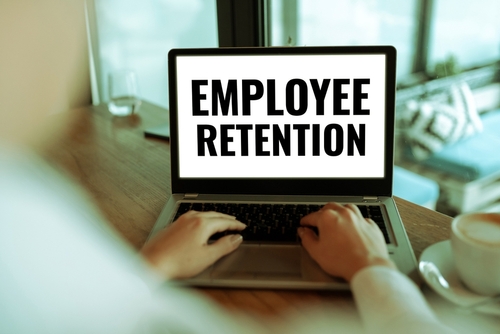For many companies, frontline employees are the face of the business. They play a key role in determining the customer experience, from creating and delivering quality products and services in a timely manner to providing exceptional customer service. This makes retaining skilled, experienced, and talented frontline employees critical to a business’s success.
High frontline employee turnover is one of the most chronic challenges for companies today. According to McKinsey, nearly half (45%) of frontline employees plan to leave their job in the next three to six months. What can companies do to encourage their frontline employees to stick around longer? Learning and development support may be key.
How Does Learning & Development Impact Frontline Employee Retention?
According to Kahoot!’s 2023 Workplace Culture Report, investing in employees’ professional development and growth could be transformative for a company’s workforce. Nearly two-thirds (64%) of frontline respondents said they would stay at their company at least six years longer if given better career support and training, and 44% said they would stay more than a decade longer. These numbers are even higher among Millennials and Gen X, with 49% and 51% respectively saying they would stay at their company more than 10 additional years with better training and career development.
This echoes previous research finding that frontline employees are prioritizing career growth opportunities even more than pay or benefits alone, and WorkStep’s report that career growth is the #1 driver of frontline turnover.
However, despite how important career development opportunities clearly are to many employees, 32% feel their employers do not invest enough in their growth, and 25% feel that their employer leaves them to develop their knowledge and skills on their own. This can create a vicious cycle where underinvestment in L&D can lead to more frontline workers leaving the company, which in turn makes companies reluctant to invest in L&D for their frontline workers.
Leveraging the Power of Learning
For companies that want to break this cycle and leverage the power of L&D for employee retention, it’s essential to begin with a strategy that’s tailored to frontline workers.
Here are tips to get started:
1. Dedicate time for skill building and communication.
When we asked frontline employees how their employer could support their professional development, the top request (38%) was for regular training sessions and workshops, closely followed by constructive feedback and guidance on their performance and development (37%).
After a new employee’s initial training, it can be rare to have dedicated time to enhance skills beyond the basics, or to give guidance or feedback in general. Since frontline workers’ shifts are on the clock, employers see the cost not only of the training but of having other employees cover the time. This can create a unique ROI challenge for frontline training. Setting aside time for training in employees’ schedules can be well worth it, however, enabling employees to understand what they can improve and build the skills to do it. This also gives employees the chance to work through challenges instead of simply leaving.
2. Meet frontline employees where they are with blended training.
Even when companies are willing to invest time into learning and development, another roadblock can be not having frontline employees in the same place to attend the training. This can be especially challenging in industries such as transportation or shipping, where employees may be spread out across great distances.
In blended training, employers combine in-person learning with online training experiences, particularly those employees can access from their mobile devices. This makes it easy for employees to connect wherever they are. According to the Workplace Culture Report, this also ranked as the third most preferred way for employers to support professional development, with 32% calling for access to online learning platforms and resources. Enabling employees to complete parts of their training online – including reading, watching videos, and other content review – can also free up in-person sessions for discussion and meaningful connection, leading to an overall learning experience which both builds team spirit and is personalized for the individual.
3. Achieve big goals step-by-step with microlearning.
Like blended learning, microlearning can also help employers meet frontline employees where they are, but in terms of time rather than location. Frontline workers are responsible for daily operations and service to customers, and it can be difficult to find time where all employees can stop for training, or even for one employee to take time out for a longer training session.
With microlearning, employers can deliver a short, often mobile-based learning experience focused on one key concept. Employees can easily fit this into their schedules, and they avoid being overwhelmed with information, making it more likely they will retain the knowledge. They can also prompt employees to take action and apply the learning immediately, ensuring the training leads to real behavior change. By implementing a microlearning strategy, companies can keep their employees learning continuously, helping them stay agile and adaptable to new challenges and opportunities.
4. Gamify training to take engagement to the next level.
Many frontline employees chose a frontline career in part because they wanted a more hands-on and social working experience. Friendly competition, such as knowledge challenges through digital tools, can be a powerful way of bringing that to life in training. With this approach, employers can make learning more interactive. It’s also a great opportunity for employee recognition and team building, both of which can encourage employees to stay with their company longer.
Tackling frontline turnover may feel daunting, but if we listen to what employees are saying is most important to them, we can create workforces that are happier, higher performing, and more sustainable for years to come.
James Micklethwait is VP of Kahoot! at work at global learning and engagement platform company Kahoot!

